Propagate Snake Plant is one of the easiest and most rewarding choices for indoor gardening. Commonly known as “Mother-in-law’s Tongue,” the snake plant is a hardy, low-maintenance houseplant that thrives in different conditions, making it perfect for both beginners and experienced plant lovers.
Through propagation, we can grow many plants from just one. It is a cost-effective method of multiplying greenery.
From snake plants, we can gain several valuable benefits, such as purifying the air and reducing stress. They are easy to keep both at home and in the office. If you also have pets at home, you may want to learn about whether spider plants are toxic to dogs.
Why Propagate Snake Plant?
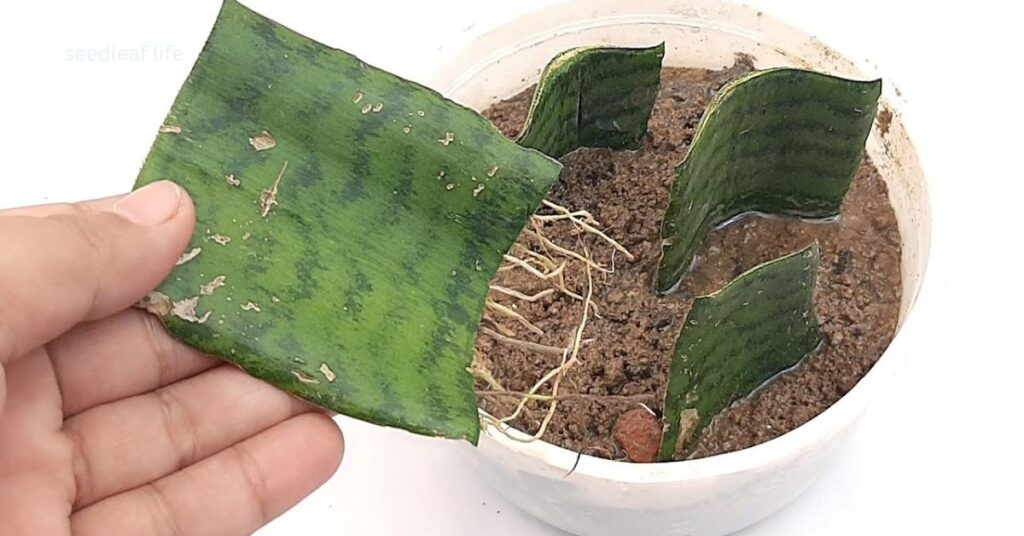
Propagate snake plant means creating new plant from an existing one, giving you more greenery without extra cost. It’s an easy way to enjoy their beauty, air-purifying qualities, and low-maintenance nature in multiple spaces.
Snake plants are an excellent choice for home decor because they filter harmful toxins from the air and help keep the indoor environment clean. They grow very easily, require minimal care, and are often called a “patient plant,” as they can thrive even with little attention.
Best Time to Propagate Snake Plant
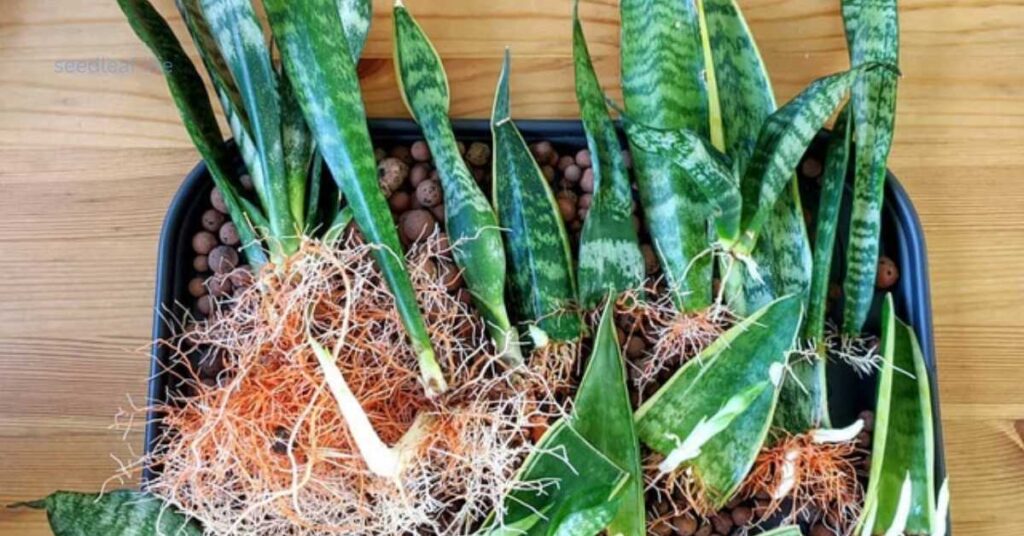
The best time for propagate snake plant is during the spring and summer seasons. When the plant matures, its cuttings and divisions root much faster in these warmer months.
On the other hand, during winter this process becomes very slow because the plant naturally enters a dormant phase. When it comes to environmental conditions, indoor propagation is the best choice for snake plants, as it provides consistent temperature and protection from pests.
Snake plants can also grow in mild outdoor climates, but if placed in direct sunlight, their leaves may scorch in extreme heat. This is why they are considered an ideal option for indoor spaces.
Methods to Propagate Snake Plant
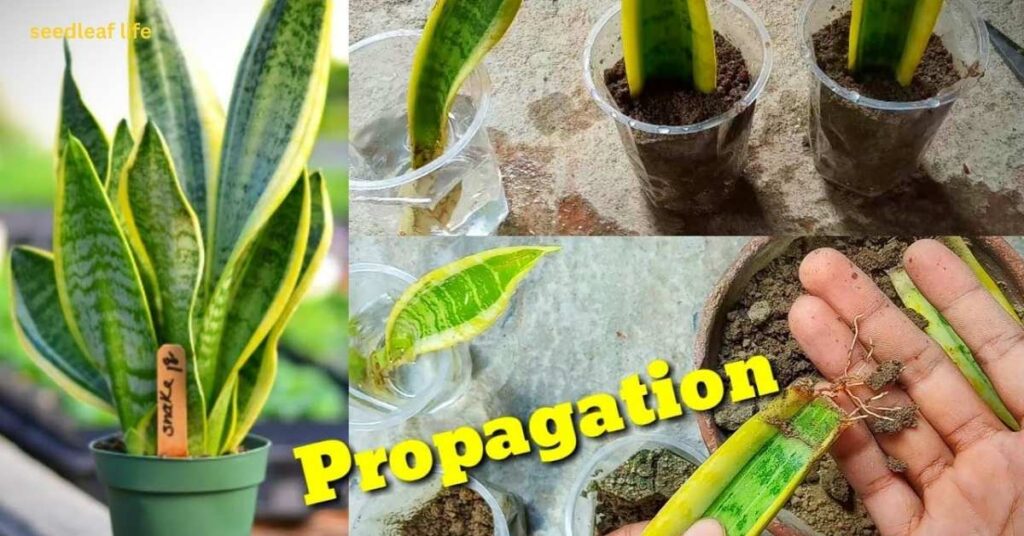
There are several easy ways to propagate snake plant, and each method works well depending on your preference and available space.
Here are the three most common methods:
Propagate Snake Plant in Soil
Step-by-Step Guide:
- Cut a healthy snake plant leaf near the base.
- Let the cutting dry for 1–2 days to allow the cut end to heal.
- Insert the dried end into well-draining potting soil.
- Water lightly and place the pot in bright, indirect light.
- Roots will begin to grow in a few weeks, followed by new shoots.
Advantages of Soil Propagation:
- Stronger root system compared to water propagation.
- Faster adaptation to soil environment.
- Less risk of transplant shock later.
Propagate Snake Plant in Water
How to Root in Water:
- Take a healthy leaf cutting and place it in a glass of clean water.
- Ensure only the bottom part of the cutting touches the water.
- Place the glass in bright, indirect light and change the water every few days.
- Roots will start developing within 2–6 weeks.
Care Tips for Water Propagation:
- Always use fresh, room-temperature water.
- Avoid direct sunlight, as it may overheat the water and damage the cutting.
- Transfer the rooted cutting into soil once roots are 2–3 inches long for stronger growth.
Propagate Snake Plant by Division
Rhizome Division Method:
- Gently remove the snake plant from its pot.
- Separate the plant into sections, ensuring each division has at least one rhizome (root section) and a few leaves.
- Replant each section into a new pot filled with well-draining soil.
- Water lightly and keep in a warm spot with indirect sunlight.
Suitable Pots & Soil:
- Use pots with drainage holes to prevent waterlogging.
- A cactus or succulent potting mix is ideal, as it allows roots to breathe and prevents rot.
How to Care for Snake Plant After Propagation
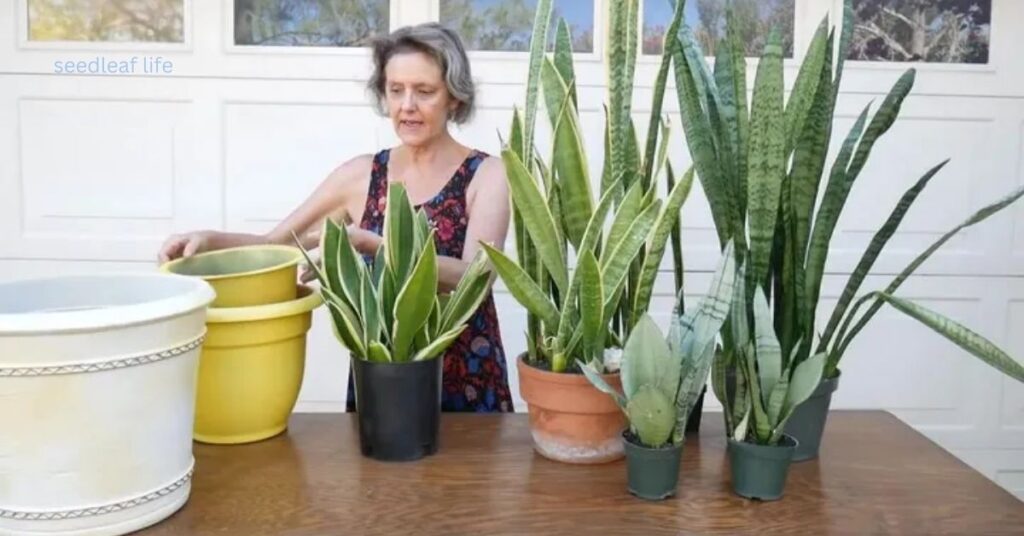
Caring for propagate snake plant is simple, but a few essentials will help them grow healthy and strong.
Watering Needs:
- Snake plants prefer light watering. Allow the soil to dry out between waterings to prevent root rot. Overwatering is the most common mistake to avoid.
Light Requirements:
- Keep the plant in bright, indirect sunlight. Snake plants can tolerate low light, but indirect sunlight encourages faster growth and healthier leaves.
Fertilizer and Soil Mix:
- Use a well-draining soil mix, such as cactus or succulent soil. Fertilize once a month during spring and summer with a balanced houseplant fertilizer, but avoid fertilizing in winter when the plant is dormant.
Common Mistakes to Avoid While Propagate Snake Plant
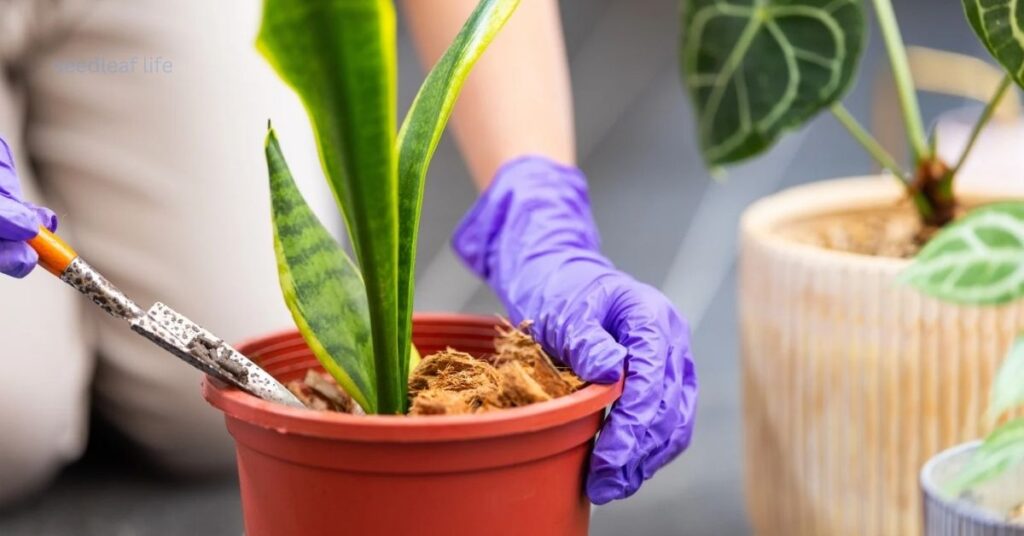
While propagation is simple, beginners often make a few mistakes that slow down or even damage the plant’s growth. Here are the most common ones to avoid:
Overwatering:
- Snake plants are very sensitive to excess water. Too much moisture can cause root rot and kill the new cuttings. Always let the soil dry between waterings.
Wrong Soil Choice:
- Using heavy or poorly draining soil prevents proper root development. Instead, choose a well-draining mix like cactus or succulent soil.
Lack of Patience:
- Snake plants are naturally slow growers. New shoots may take weeks or even months to appear. Avoid disturbing the cuttings frequently and allow them time to develop.
Keeping propagate snake plant indoors comes with several valuable benefits:
Air Purification:
- Snake plants are known for their ability to filter toxins such as formaldehyde and benzene, improving overall air quality and making your living space healthier.
Stress Reduction:
- The calming greenery of snake plants creates a soothing environment. Simply looking at them can reduce stress and bring a sense of peace to both homes and offices.
- If you think about it, life is filled with tensions. Whenever I feel very worried, just looking at this little plant makes me calm.
- It feels like a silent whisper, as if the plant is speaking to me. Watching it instantly lifts my mood and brings me happiness.
Cost-Effective Indoor Gardening:
- Propagation allows you to multiply your plants without extra expense. From a single plant, you can create multiple new ones, perfect for decorating different rooms or even sharing with friends.
- Let me share an interesting story with you. One of my friends visited my home and noticed the snake plants in my room. I actually have snake plants in almost four rooms of my house.
- She admired them instantly and said, “Wow, just looking at this plant makes me feel so peaceful.” When she found out more about it, I decided to gift her a snake plant of her own, and she was truly delighted.
- These small plants may seem simple, but they become a real source of happiness in our lives.
Frequently Asked Questions about Propagate Snake Plant
How long does it take to propagate?
Propagation usually takes 4–8 weeks, depending on the method. Water cuttings often show roots faster, while soil propagation and division may take a little longer. Patience is key, as snake plants are naturally slow growers.
Which method is best?
All methods work, but the division method is the fastest and most reliable, as it uses mature rhizomes. Water propagation is popular for beginners since it’s easy to observe root growth, while soil propagation creates stronger plants in the long run.
Can snake plant grow only in water?
Yes, snake plants can survive in water for several months and even grow roots. However, for long-term health, they thrive better in well-draining soil, which provides more nutrients and stability.
Conclusion
Propagate snake plant is simple, rewarding, and highly beneficial. Whether you choose the soil method, the water method, or the division method, each offers an easy way to multiply your greenery and enjoy more of this resilient houseplant.
With their air-purifying qualities, stress-relieving presence, and low-maintenance nature, propagated snake plants make an excellent addition to any home or office. So why not give it a try? Start with a single cutting, and soon you’ll have a collection of snake plants bringing beauty and calm into your space.

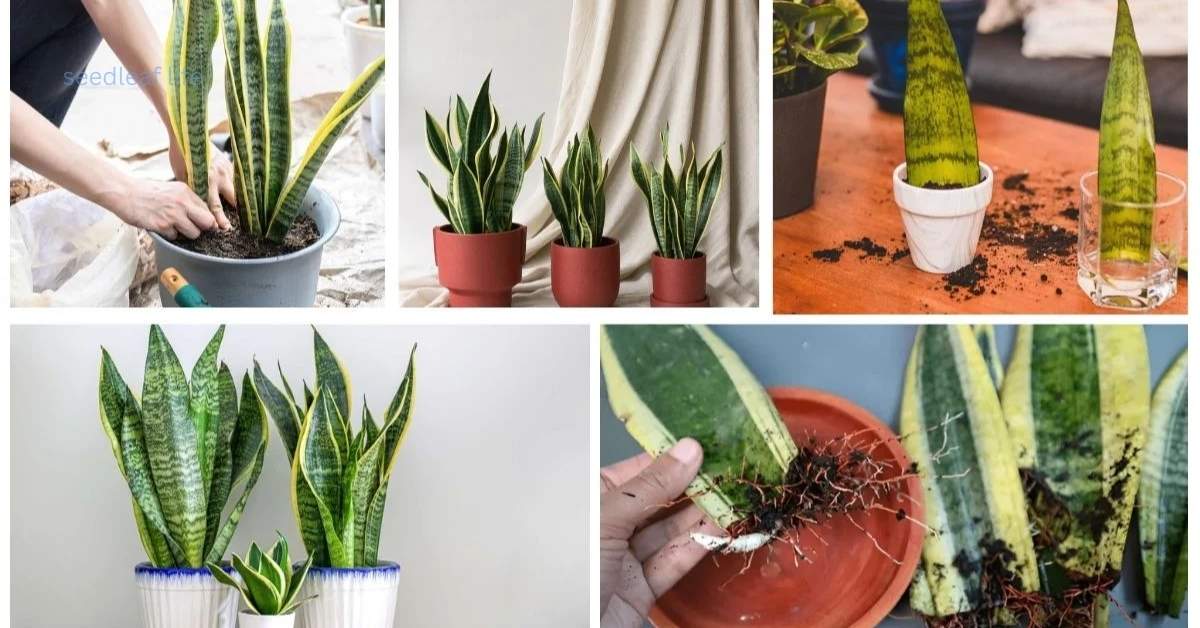
Leave a Reply